Nokia 2012 Annual Report Download - page 214
Download and view the complete annual report
Please find page 214 of the 2012 Nokia annual report below. You can navigate through the pages in the report by either clicking on the pages listed below, or by using the keyword search tool below to find specific information within the annual report.-
 1
1 -
 2
2 -
 3
3 -
 4
4 -
 5
5 -
 6
6 -
 7
7 -
 8
8 -
 9
9 -
 10
10 -
 11
11 -
 12
12 -
 13
13 -
 14
14 -
 15
15 -
 16
16 -
 17
17 -
 18
18 -
 19
19 -
 20
20 -
 21
21 -
 22
22 -
 23
23 -
 24
24 -
 25
25 -
 26
26 -
 27
27 -
 28
28 -
 29
29 -
 30
30 -
 31
31 -
 32
32 -
 33
33 -
 34
34 -
 35
35 -
 36
36 -
 37
37 -
 38
38 -
 39
39 -
 40
40 -
 41
41 -
 42
42 -
 43
43 -
 44
44 -
 45
45 -
 46
46 -
 47
47 -
 48
48 -
 49
49 -
 50
50 -
 51
51 -
 52
52 -
 53
53 -
 54
54 -
 55
55 -
 56
56 -
 57
57 -
 58
58 -
 59
59 -
 60
60 -
 61
61 -
 62
62 -
 63
63 -
 64
64 -
 65
65 -
 66
66 -
 67
67 -
 68
68 -
 69
69 -
 70
70 -
 71
71 -
 72
72 -
 73
73 -
 74
74 -
 75
75 -
 76
76 -
 77
77 -
 78
78 -
 79
79 -
 80
80 -
 81
81 -
 82
82 -
 83
83 -
 84
84 -
 85
85 -
 86
86 -
 87
87 -
 88
88 -
 89
89 -
 90
90 -
 91
91 -
 92
92 -
 93
93 -
 94
94 -
 95
95 -
 96
96 -
 97
97 -
 98
98 -
 99
99 -
 100
100 -
 101
101 -
 102
102 -
 103
103 -
 104
104 -
 105
105 -
 106
106 -
 107
107 -
 108
108 -
 109
109 -
 110
110 -
 111
111 -
 112
112 -
 113
113 -
 114
114 -
 115
115 -
 116
116 -
 117
117 -
 118
118 -
 119
119 -
 120
120 -
 121
121 -
 122
122 -
 123
123 -
 124
124 -
 125
125 -
 126
126 -
 127
127 -
 128
128 -
 129
129 -
 130
130 -
 131
131 -
 132
132 -
 133
133 -
 134
134 -
 135
135 -
 136
136 -
 137
137 -
 138
138 -
 139
139 -
 140
140 -
 141
141 -
 142
142 -
 143
143 -
 144
144 -
 145
145 -
 146
146 -
 147
147 -
 148
148 -
 149
149 -
 150
150 -
 151
151 -
 152
152 -
 153
153 -
 154
154 -
 155
155 -
 156
156 -
 157
157 -
 158
158 -
 159
159 -
 160
160 -
 161
161 -
 162
162 -
 163
163 -
 164
164 -
 165
165 -
 166
166 -
 167
167 -
 168
168 -
 169
169 -
 170
170 -
 171
171 -
 172
172 -
 173
173 -
 174
174 -
 175
175 -
 176
176 -
 177
177 -
 178
178 -
 179
179 -
 180
180 -
 181
181 -
 182
182 -
 183
183 -
 184
184 -
 185
185 -
 186
186 -
 187
187 -
 188
188 -
 189
189 -
 190
190 -
 191
191 -
 192
192 -
 193
193 -
 194
194 -
 195
195 -
 196
196 -
 197
197 -
 198
198 -
 199
199 -
 200
200 -
 201
201 -
 202
202 -
 203
203 -
 204
204 -
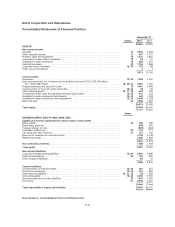 205
205 -
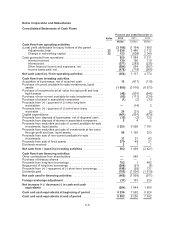 206
206 -
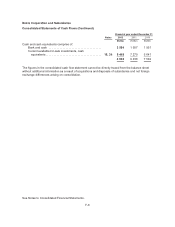 207
207 -
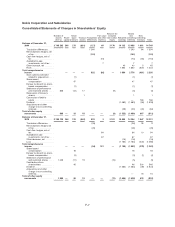 208
208 -
 209
209 -
 210
210 -
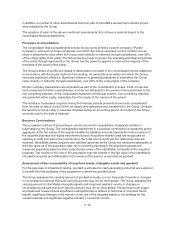 211
211 -
 212
212 -
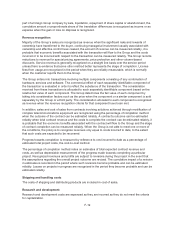 213
213 -
 214
214 -
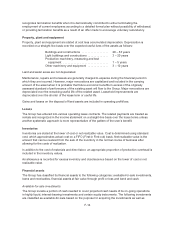 215
215 -
 216
216 -
 217
217 -
 218
218 -
 219
219 -
 220
220 -
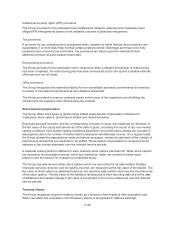 221
221 -
 222
222 -
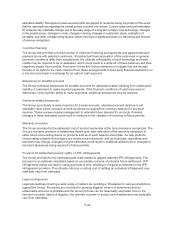 223
223 -
 224
224 -
 225
225 -
 226
226 -
 227
227 -
 228
228 -
 229
229 -
 230
230 -
 231
231 -
 232
232 -
 233
233 -
 234
234 -
 235
235 -
 236
236 -
 237
237 -
 238
238 -
 239
239 -
 240
240 -
 241
241 -
 242
242 -
 243
243 -
 244
244 -
 245
245 -
 246
246 -
 247
247 -
 248
248 -
 249
249 -
 250
250 -
 251
251 -
 252
252 -
 253
253 -
 254
254 -
 255
255 -
 256
256 -
 257
257 -
 258
258 -
 259
259 -
 260
260 -
 261
261 -
 262
262 -
 263
263 -
 264
264 -
 265
265 -
 266
266 -
 267
267 -
 268
268 -
 269
269 -
 270
270 -
 271
271 -
 272
272 -
 273
273 -
 274
274 -
 275
275 -
 276
276 -
 277
277 -
 278
278 -
 279
279 -
 280
280 -
 281
281 -
 282
282 -
 283
283 -
 284
284
 |
 |
Other intangible assets
Acquired patents, trademarks, licenses, software licenses for internal use, customer relationships and
developed technology are capitalized and amortized using the straight-line method over their useful
lives, generally 3 to 7 years. Where an indication of impairment exists, the carrying amount of the
related intangible asset is assessed for recoverability. Any resulting impairment losses are recognized
immediately in the income statement.
Employee benefits
Pensions
The Group companies have various pension schemes in accordance with the local conditions and
practices in the countries in which they operate. The schemes are generally funded through payments
to insurance companies or contributions to trustee-administered funds as determined by periodic
actuarial calculations.
In a defined contribution plan, the Group has no legal or constructive obligation to make any additional
contributions even if the party receiving the contributions is unable to pay the pension obligations in
question. The Group’s contributions to defined contribution plans, multi-employer and insured plans are
recognized in the income statement in a period which the contributions relate to.
If a pension plan is funded through an insurance contract where the Group does not retain any legal or
constructive obligations, the plan is treated as a defined contribution plan. All arrangements that do not
fulfill these conditions are considered defined benefit plans.
For defined benefit plans, pension costs are assessed using the projected unit credit method: Pension
cost is recognized in the income statement so as to spread the service cost over the service lives of
employees. Pension obligation is measured as the present value of the estimated future cash outflows
using interest rates on high quality corporate bonds with appropriate maturities. Actuarial gains and
losses outside corridor are recognized over the average remaining service lives of employees. The
corridor is defined as ten percent of the greater of the value of plan assets or defined benefit obligation
at the beginning of the respective year. Actuarial gains and losses within the corridor limits are not
recognized.
Past service costs are recognized immediately in income, unless the changes to the pension plan are
conditional on the employees remaining in service for a specified period of time (the vesting period). In
this case, the past service costs are amortized on a straight-line basis over the vesting period.
The liability (or asset) recognized in the statement of financial position is pension obligation at the
closing date less the fair value of plan assets, unrecognized actuarial gains and losses, and past
service costs. Any net pension asset is limited to unrecognized actuarial losses, past service cost, the
present value of available refunds from the plan and expected reductions in future contributions to the
plan.
Actuarial valuations for the Group’s defined benefit pension plans are performed annually. In addition,
actuarial valuations are performed when a curtailment or settlement of a defined benefit plan occurs in
the Group.
Termination benefits
Termination benefits are payable when employment is terminated before the normal retirement date, or
whenever an employee accepts voluntary redundancy in exchange for these benefits. The Group
F-13
